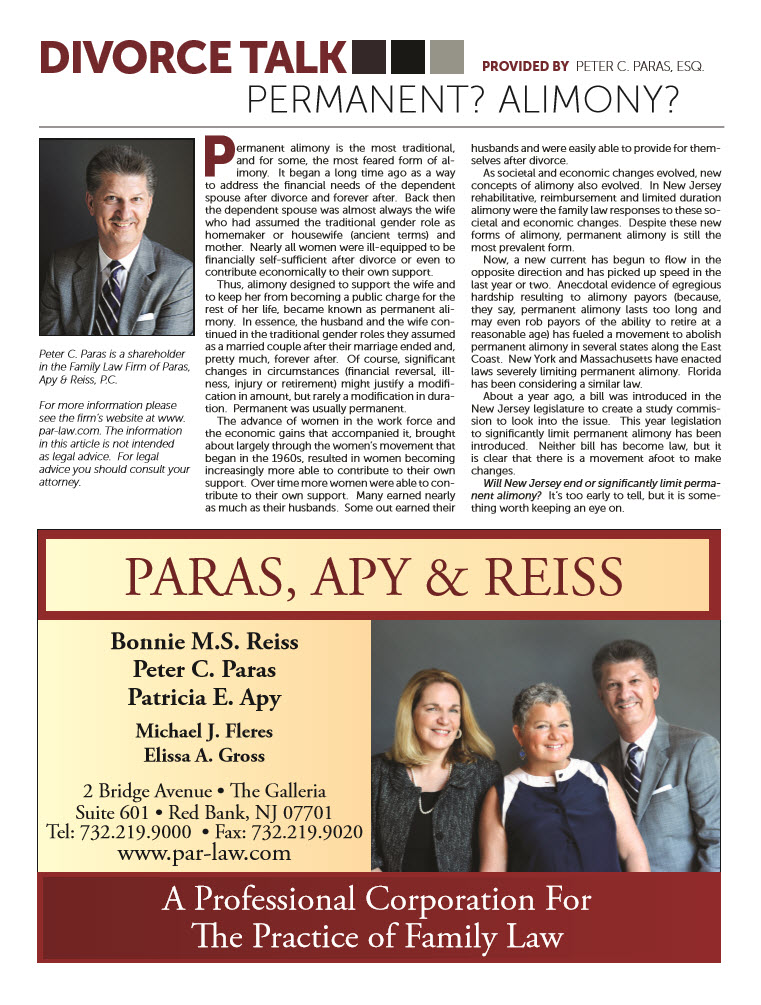Permanent alimony is the most traditional, and for some, the most feared form of alimony. It began a long time ago as a way to address the financial needs of the dependent spouse after divorce and forever after. Back then the dependent spouse was almost always the wife who had assumed the traditional gender role as homemaker or housewife (ancient terms) and mother. Nearly all women were ill-equipped to be financially self-sufficient after divorce or even to contribute economically to their own support.
Thus, alimony designed to support the wife and to keep her from becoming a public charge for the rest of her life, became known as permanent alimony. In essence, the husband and the wife continued in the traditional gender roles they assumed as a married couple after their marriage ended and, pretty much, forever after. Of course, significant changes in circumstances (financial reversal, illness, injury or retirement) might justify a modification in amount, but rarely a modification in duration. Permanent was usually permanent.
The advance of women in the work force and the economic gains that accompanied it, brought about largely through the women’s movement that began in the 1960s, resulted in women becoming increasingly more able to contribute to their own support. Over time more women were able to contribute to their own support. Many earned nearly as much as their husbands. Some out earned their husbands and were easily able to provide for themselves after divorce.
As societal and economic changes evolved, new concepts of alimony also evolved. In New Jersey rehabilitative, reimbursement and limited duration alimony were the family law responses to these societal and economic changes. Despite these new forms of alimony, permanent alimony is still the most prevalent form.
Now, a new current has begun to flow in the opposite direction and has picked up speed in the last year or two. Anecdotal evidence of egregious hardship resulting to alimony payors (because, they say, permanent alimony lasts too long and may even rob payors of the ability to retire at a reasonable age) has fueled a movement to abolish permanent alimony in several states along the East Coast. New York and Massachusetts have enacted laws severely limiting permanent alimony. Florida has been considering a similar law.
About a year ago, a bill was introduced in the New Jersey legislature to create a study commission to look into the issue. This year legislation to significantly limit permanent alimony has been introduced. Neither bill has become law, but it is clear that there is a movement afoot to make changes.
Will New Jersey end or significantly limit permanent alimony? It’s too early to tell, but it is something worth keeping an eye on.

